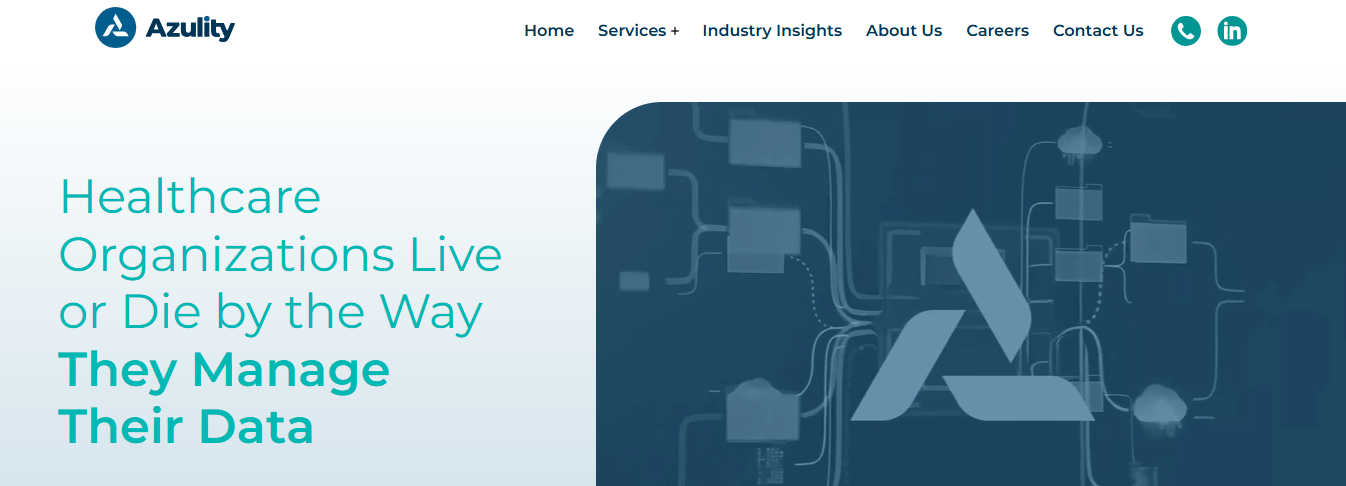Consider a busy dental office ready to onboard a new dentist. The staff is excited to welcome the latest addition and hopes this transition will be smooth. But as they prepare for the new dentist’s arrival, they discover they are unsure how to handle the credentialing process.
Their nerves start to creep in as they realize that the credentialing process can take weeks, if not months, to complete. Will they secure the new dentist’s insurance payments before he can start seeing patients? Will they have to delay his start date? Will he lose interest and take another job? Or, worse, will the new dentist get frustrated and leave before he starts?
This scenario is all too common, but it doesn’t have to be. A dentist credentialing checklist can help practices organize their approach to the credentialing process to quickly and efficiently hire new dentists and see patients. This guide will explore the dentist credentialing checklist and outline the steps to take before, during, and after the credentialing process.
A thorough checklist will help you onboard new dentists faster and reduce the risk of errors that can cause delays and other problems. As part of the healthcare credentialing workflow, this checklist can allow your dental practice to improve operations and deliver better patient care.
Enlisting the help of an expert is an easy way to get started with the dentist credentialing checklist. Azulity’s provider credentialing services take the stress out of credentialing so you can focus on what matters most—your patients.
Importance of Credentialing for Dentists


Credentialing for dentists is an essential process that helps dental professionals demonstrate their expertise and competence in their field. It verifies that a dentist has the necessary skills and education to provide quality care to their patients.
How Does Credentialing Help Build Trust with Patients?
One of the most significant benefits of credentialing is that it helps build patient trust. Patients want to know they receive care from a qualified professional with the necessary skills and knowledge to provide the best possible treatment. Dentists can demonstrate their commitment to their profession and patients by obtaining credentials.
How Can Credentialing Help Dentists Grow Their Practice?
Credentialing can help dentists build trust with patients and grow their practice. Many insurance companies require dentists to be credentialed before they can participate in their networks. By becoming credentialed, dentists can expand their patient base and increase revenue.
How Does Credentialing Help Dentists Stay Up to Date?
Another benefit of credentialing is that it can help dentists stay up-to-date with the latest developments in their field. Many credentialing organizations require dentists to complete continuing education courses to maintain their credentials. This ensures that dentists are knowledgeable about the latest techniques and technologies and can provide the best possible care to their patients.
Related Reading
8 Tips for Dentists for Efficient Credentialing


1. Automate Your Credentialing With Azulity
Azulity specializes in healthcare master data management and provider credentialing services. Our expertise in implementing healthcare data solutions and credentialing spans the United States. Using our comprehensive platform, you can ensure consistent synchronization of patient, provider, location, and claims data across all systems and departments.
Key features include healthcare MDM, provider MDM, reference data management, credentialing, and provider enrollment. We help healthcare technology leaders eliminate the costly problems of fragmented data systems. Book a call to learn more about our healthcare master data management services today!
2. Gather Required Documents Before Starting
Before starting the credentialing process, ensure you have all the required documents. Missing or incomplete paperwork can delay the process and result in rejection. Standard documents required include:
Dental License
Proof of current and valid dental license issued by the state you practice in.
DEA Certificate
If you prescribe controlled substances, you’ll need a Drug Enforcement Administration (DEA) certificate.
Malpractice Insurance
Documentation showing that you have professional liability insurance.
CV or Resume
A detailed work history that outlines your experience and qualifications.
Proof of Education
Diplomas, degree certificates, and continuing education records that verify your educational background.
National Provider Identifier (NPI)
This unique identifier is required for insurance billing and claims processing.
3. Complete the Credentialing Application
Once you have all the documents in order, the next step is to complete the credentialing application. Most insurance companies will have their application forms, which can typically be filled out online. Multiple insurers often use a centralized platform, such as the Council for Affordable Quality Healthcare (CAQH), to facilitate the process. While completing the application, double-check the accuracy of all information. Inaccurate or incomplete applications can cause delays or denials.
4. Submit the Application
Once the application is completed, you must submit it to the insurance networks you wish to join. The submission can be done directly to the insurer or through a service like CAQH, depending on the insurance company’s preference. If submitting through CAQH, maintain an updated profile with all your relevant credentials. This will make the process smoother if you’re applying to multiple insurers simultaneously.
5. Verification Process
After submission, the insurance company will verify the information provided. They will review your education, licensure, and work history and may conduct background checks. This verification process can take several weeks or even months, depending on the insurer and the completeness of your application.
6. Approval and Contracting
Once the insurance company completes the verification, they will approve or deny your application. If approved, they will send you a provider agreement outlining the terms of your participation in their network, including reimbursement rates, billing procedures, and other policies. Review the contract carefully before signing to ensure the terms align with your practice’s goals. After signing the agreement, you’ll officially be an in-network provider with that insurance company.
7. Recredentialing and Ongoing Maintenance
Dental credentialing isn’t a one-time process. Insurers require providers to undergo re-credentialing every few years to ensure continued compliance with their standards. Re-credentialing involves updating information, submitting new documentation, and possibly undergoing another verification process.
8. Credentialing Renewal
To avoid disruptions in your in-network status, tracking credentialing renewal deadlines and completing the necessary paperwork ahead of time is essential. Missing a credentialing renewal deadline can result in losing your in-network status, affecting patient access and revenue.
The Ultimate Dentist Credentialing Checklist


Keep Track of State Dental Licenses
Insurance companies check licenses first when verifying a dentist’s credentials. To ensure a smooth credentialing process, dentists should keep track of all state dental licenses, including active and inactive licenses across multiple states. If a dentist has held a license in another state, there may be an issue if the license is subject to disciplinary action.
Gather Malpractice Insurance Information
Most insurance payers require dentists to have professional liability insurance (or malpractice insurance) before credentialing them to their network. As part of the credentialing process, dentists must provide information about their malpractice insurance policies, including coverage limits and claims history. Dentists should also be prepared to give this information periodically, as some insurance payers will review malpractice insurance coverage annually.
List Practice Locations
Another common component of dental credentialing is practice location information. Even if a dentist applies for credentialing at a single insurance payer, they must provide information about all current and pending practice locations. This includes addresses and phone numbers and may require submitting any relevant facility licenses or certifications.
Document Education and Training
Dental credentialing also involves thoroughly reviewing a dentist’s education and training. Dentists should prepare to provide documentation of their educational history, including dental school diplomas, transcripts, and any specialized training certifications. This is crucial for establishing a dentist’s qualifications and competencies for providing care.
Obtain an NPI Number
The National Provider Identifier (NPI) is a unique identification number assigned to healthcare providers in the United States. An NPI number is necessary for billing, and insurance payers will require a dentist’s NPI number as part of the credentialing process. Dentists can apply for an NPI number on the Centers for Medicare and Medicaid Services (CMS) website.
Prepare Additional Documentation
While the items listed above are the most common components of dental credentialing, several additional documents may be required depending on the specifics of the credentialing process. Dentists should be prepared to provide the following items if applicable:
Hospital Affiliation Information
If a dentist has privileges at a local hospital or other facility, they must provide the names and locations of these affiliations. Some insurance payers will also request information about the dentist’s history with these organizations, including any disciplinary actions.
Anesthesia License
If a dentist administers anesthesia, they must provide a copy of their anesthesia license as part of the credentialing process.
DEA License
Dentists who prescribe or handle controlled substances will need to provide a copy of their Drug Enforcement Administration (DEA) license for the credentialing process.
CDS License
If applicable, dentists should also prepare to provide a copy of their Controlled Dangerous Substances (CDS) license as part of the credentialing process.
Medicare and Medicaid Numbers
Dentists in Medicare or Medicaid should be prepared to provide their provider numbers for these programs.
BLS and ACLS Certifications
Current Basic Life Support (BLS) and Advanced Cardiovascular Life Support (ACLS) certifications are often required for dental credentialing. Dentists should ensure their certifications are current and include documentation for both as part of the credentialing process.
Curriculum Vitae (CV)
Most credentialing processes require dentists to provide a current curriculum vitae (CV) or resume detailing their professional history.
Letters of Recommendation
Letters of recommendation or references may also be required as part of the credentialing process.
Business License
If applicable, a dentist should also prepare to provide a copy of their business license for credentialing.
Completed W-9 Tax Form
Dentists should also prepare to submit a completed W-9 tax form for credentialing. Ensuring that the information on this form matches the information forwarded to insurance payers is essential to avoid discrepancies that could delay the credentialing process.
How Azulity’s Credentials Will Help You Get Your Dentists Credentialed Fast
Azulity specializes in healthcare master data management and provider credentialing services, bringing proven expertise in implementing healthcare data solutions and credentialing across the US. Our comprehensive platform ensures consistent patient, provider, location, and claims data synchronization across all systems and departments.
Key features include healthcare MDM, provider MDM, reference data management, credentialing, and provider enrollment. We serve healthcare technology leaders – from CIOs and CDOs to VPs of data platforms and credentialing – helping them eliminate the costly problems of fragmented data systems. Book a call to learn more about our healthcare master data management services today!
Essential Components of Dental Credentialing


Credentialing Applications: The First Step to Getting Credentialed
Credentialing applications are the first step in the dental credentialing process. These are the forms or online portals that dental professionals use to apply for enrollment in a healthcare insurance network. The applications require comprehensive information about the dentist, including education, work history, licenses, and professional certifications.
The documents required may vary for each payer to which a dentist applies. Credentialing applications are essential to dental credentialing as they provide a glimpse into a dentist’s qualifications and competitiveness when applying for enrollment.
CAQH Registration: The Secret Weapon of Dental Credentialing
CAQH registration is a powerful tool for streamlining dental credentialing. The Council for Affordable Quality Healthcare (CAQH) is more than just a database; it centralizes all your professional information, from qualifications to work experience. By registering and creating a CAQH profile, you distribute all your details electronically through a click to all participating insurance companies, saving you the trouble of filling out repetitive applications.
CAQH ensures uniformity and consistency in presenting your information as it operates under a predetermined set of universally recognized standards. This uniformity streamlines the dental credentialing process. As CAQH is recognized as the core part of the dental insurance credentialing process by many commercial providers, maintaining a CAQH profile opens every kind of door for a provider. They can participate in a broader range of insurance networks. CAQH can vary in duration, with the overall process taking anywhere from a few days to several weeks.
Credentialing with Non-CAQH Payers: A Unique Approach to Dental Credentialing
As mentioned, numerous insurance providers use CAQH standards for credentialing, but some commercial payers use these parameters to a limited extent. Dealing with non-CAQH payers is different. You need to identify which no-CAQH payer you need to get credentials with. Do in-depth research into their specific requirements.
After that, you need to reach out to each of them individually and with a different approach, as their demands may vary. Also, pay close attention to any unique requirements or additional information they request. Don’t hesitate to follow up with the payer’s credentialing department if you encounter delays.
Related Reading
- Behavioral Health Credentialing Checklist
- How to Do Credentialing in Healthcare
- Nurse Practitioner Credentialing Checklist
- Physician Credentialing Services Cost
Book a Call to Learn More About Our Provider Credentialing Services


Azulity is a leader in healthcare master data management and provider credentialing services. We have a proven track record of helping healthcare organizations eliminate fragmented data systems. Our expertise extends to implementing healthcare data solutions and credentialing across the United States. With our comprehensive credentialing platform, we synchronize patient, provider, location, and claims data. This helps organizations streamline operations, reduce costs, and speed up the dentist credentialing process.
Key features of our platform include healthcare master data management, provider MDM, reference data management, credentialing, and provider enrollment. By alleviating the costly problems caused by fragmented data systems, Azulity can help you quickly credential your dentists.
